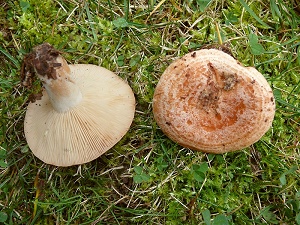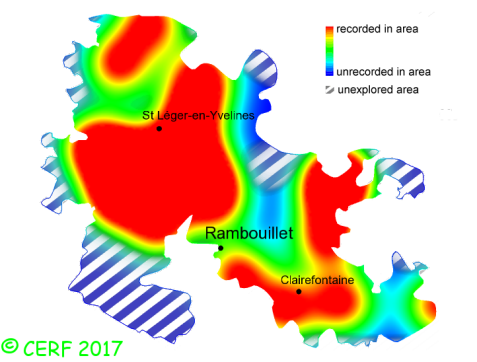| Lactarius chrysorrheus Fr. |
|
|
|
|
|
|
The cap is orange to pink. The cap surface is with concentric bands, viscid in wet weather. The stem is white, without ring. The flesh is white, yellowing when exposed to air; its taste is acrid; the odour is not distinctive; its texture is grainy (breaking like a chalk stick), exuding when cut a white milk, turning yellow when exposed to air. The gills are cream to salmon pink, decurrent, crowded (nb of gills per 90° ~ 34 ). The spore print is white. This species is mycorrhizal. It grows in deciduous or mixed woods, on a rather acid soil, most of the time with oak, but also with other deciduous trees, chestnut, pine. The fruiting period takes place from July to November.
Chemical tests : none. Distinctive features : Flesh or salmon pink to ochre buff cap, with concentric orange blotches; white and abundant milk, turning bright sulphur yellow very quickly (10s); under oaks Lactarius chrysorrheus is frequent and very widely present in the forest of Rambouillet, and is frequent, more generally speaking . | ||
|
page updated on 14/01/18

